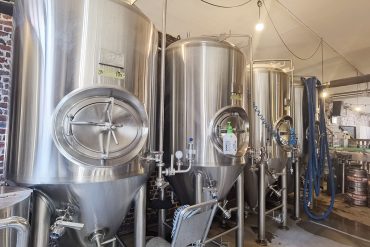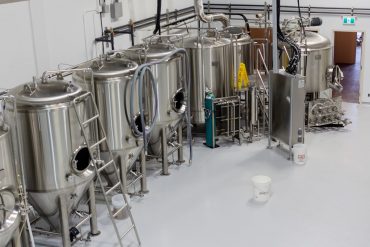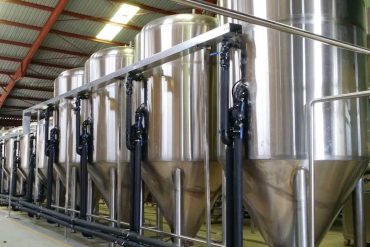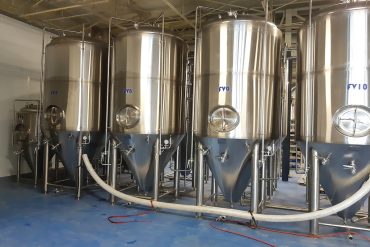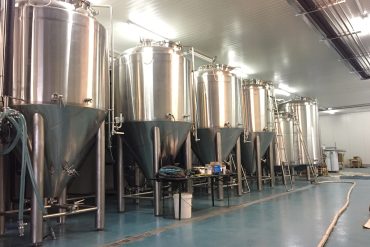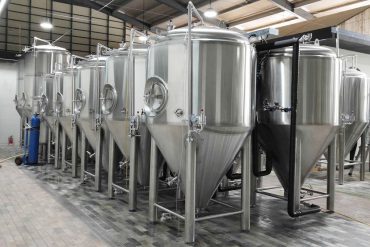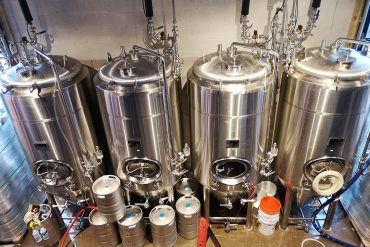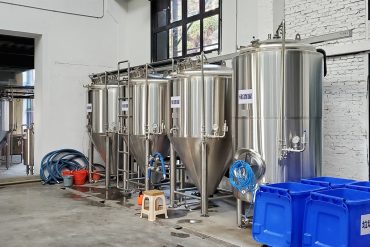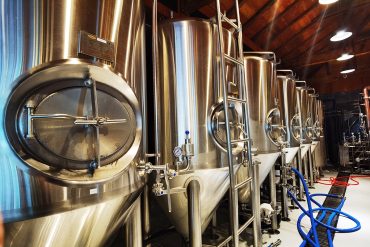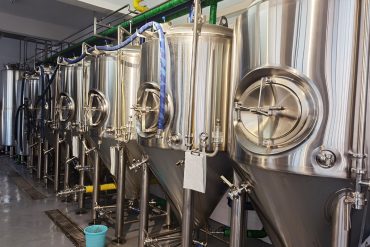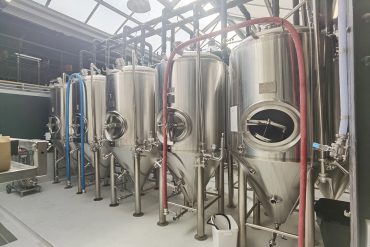Main Body Warranty
Auxiliary Warranty
Equipment Type
Fermentation Tank Products
Advantages of Fermentation Tank

Customized
ZYB Craft can custom design according to customers' specific requirements. Whether adjusting capacity, incorporating unique features, or accommodating space constraints, our custom-designed fermenters ensure brewers have the flexibility to tailor their brew setup to exact specifications.

Optimize Performance
Fermenters are precision-engineered to optimize brewing performance. From advanced temperature control systems to innovative design features that promote yeast health and activity, our tanks are engineered to ensure consistent, high-quality fermentation results from batch to batch.

Durability and Quality
Fermenters are manufactured from high-grade stainless steel and strict quality control measures and are designed to meet the needs of commercial brewing operations. It’s durable, corrosion-resistant, and built to last, giving brewers reliable equipment that will stand the test of time.

Improve Efficiency
By streamlining the fermentation process and giving brewers the tools to monitor and control key variables, our fermenters help improve overall brewing efficiency. This means shorter production times, higher batch volumes, and ultimately greater brewery profitability.

Technical Support
In addition to providing top-quality fermentation tanks, we also provide customers with comprehensive technical support and assistance. Whether it's troubleshooting issues, providing maintenance tips, or providing brewing advice, our team is dedicated to supporting customers every step of the way to ensure a smooth, successful brewing experience.

Versatility
Fermentation tanks are versatile and can be adapted to a variety of beer styles and production techniques. With customizable features and configurations, brewers have the flexibility to adapt their tanks to changing brewing preferences and trends.
Why Choose ZYB Craft
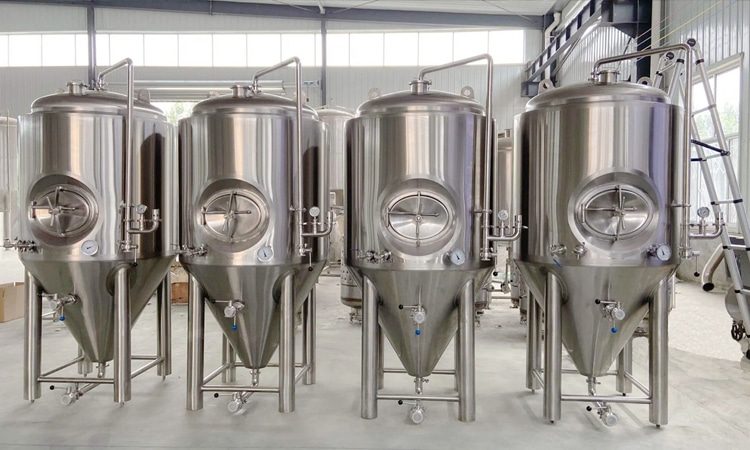
Customization Expertise
Comprehensive Support
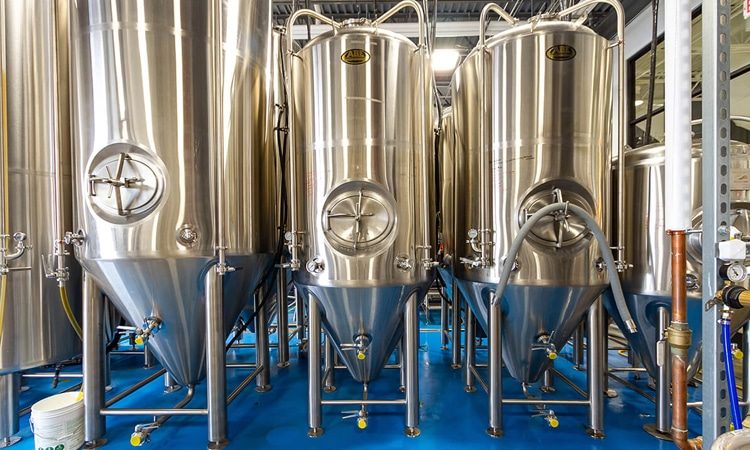
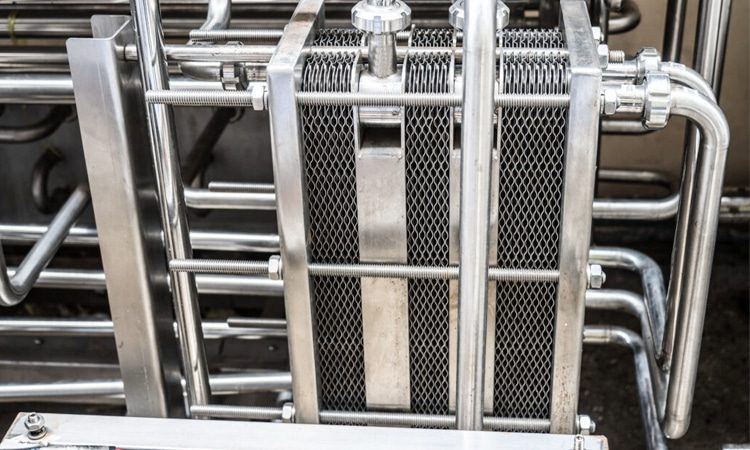
Exceptional Quality
Proven Track Record
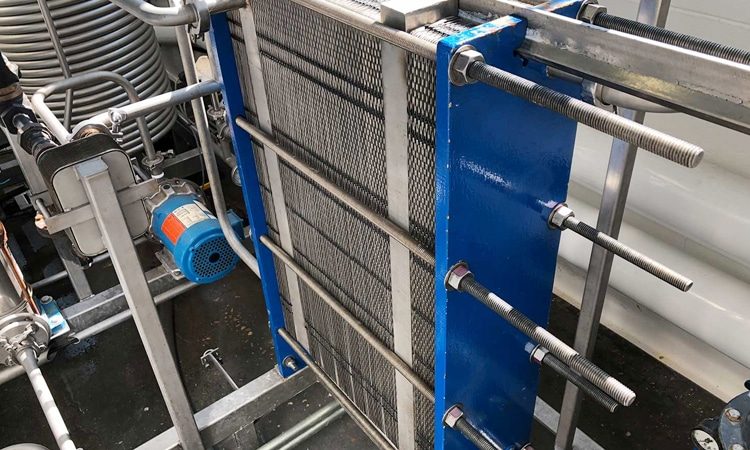
Get Fermentation Tank Solutions
Frequently Asked Questions
What is a fermentation tank?
What Is The Difference Between A Fermentation Tank And A Unitank?
Fermentation tanks and unit tanks are both vessels used in the fermentation process to produce various fermented products such as beer, wine, or spirits. But they have some noticeable differences in design and functionality, here’s a comparison between the two:
- Purpose:
- Fermentation tank: The fermentation tank is a vessel designed specifically for primary fermentation, in which microorganisms (such as yeast) convert sugar into alcohol, carbon dioxide, and other by-products. Primary fermentation is typically the initial stage of the fermentation process and is critical to the production of alcohol, beer, wine, or other fermented products.
- Unitank: Unitank is the abbreviation of “universal tank” and is a multi-functional container that combines primary fermentation and secondary fermentation (conditioning) in one tank. It allows the entire fermentation process to take place in one vessel, from initial fermentation to maturation and carbonation.
- Function:
- Fermentation tank: The fermentation tank is mainly used in the primary fermentation stage. After primary fermentation is complete, the liquid (such as beer or wine) can be transferred to another vessel for further processing, such as conditioning, aging, or filtration.
- Unitank: Unitank is designed to handle primary and secondary fermentation stages. It eliminates the need to transfer liquid to another container after primary fermentation, helping to reduce the risk of contamination and simplifying the fermentation process.
- Design:
- Fermentation tank: The fermentation tank can be of simple design with features such as temperature control, airtight seals, pressure relief valves, and cooling jackets for temperature regulation during fermentation.
- Unitank: The design of the Unitank is more complex as it needs to accommodate the primary and secondary fermentation processes. It typically includes features such as cooling and heating jackets, pressure-rated structures, support arms for fluid transfer, and carbonation capabilities.
- Usage:
- Fermentation tank: The fermentation tank is commonly used in breweries, wineries, and other fermentation industries where the product is further processed in a separate vessel, usually after primary fermentation.
- Unitank: Unitanks are popular in the beer industry, especially for craft breweries, where they simplify the fermentation process and save space and time.
- Carbonation:
- Fermentation tank: In standard fermentation tanks, carbonation is not usually achieved during fermentation. Carbonation is usually added later, either naturally during conditioning or artificially through forced carbonation.
- Unitank: Unitank allows for carbonation during fermentation. This is achieved by controlling the pressure within the tank and dissolving carbon dioxide into the liquid during secondary fermentation, resulting in naturally carbonated beverages such as beer.
In summary, fermenters are designed for primary fermentation, while Unitank combines primary and secondary fermentation in one vessel. The choice between the two depends on the specific needs and processes of the fermentation industry or brewery.
What is an ideal fermentation tank?
The ideal fermentation tank may vary depending on the specific requirements and characteristics of the fermentation process and the type of product being produced. There is no one-size-fits-all answer to this question. Different industries and products may have different needs, so the ideal fermentation tank will be customized to meet those specific requirements. Here are some key factors to consider when determining what makes up an ideal fermentation tank:
- Material: The fermentation tank should be made of suitable materials that are corrosion-resistant, easy to clean, and do not react with the fermentation products. Stainless steel is a common choice due to its durability and hygienic properties, but for some special applications, other materials such as oak or food-grade plastic can be used.
- Design And Shape: The design of the fermentation tank affects the fermentation process. A cylindrical fermentation tank is usually preferred as it provides good mixing and heat distribution. Conical fermentation tanks are commonly used for beer fermentation because they facilitate the separation of yeast and sediment from the liquid. Fermentation tanks should be designed to facilitate proper mixing, temperature control, and airtight sealing.
- Temperature Control: The ability to control and maintain fermentation temperature helps optimize product quality and consistency. Fermentation tanks often require precise temperature control to ensure consistent product quality. The ideal fermentation tank should have features such as cooling jackets or insulation layers to effectively regulate temperature.
- Oxygen Control: Some fermentation processes require precise control of oxygen levels, so fermentation tanks should have appropriate sealing and ventilation mechanisms to regulate oxygen entry.
- Size And Capacity: The size of the fermenter should match the production needs of the facility. Fermentation tanks that are too small may limit production, while fermentation tanks that are too large may result in inefficiencies or unnecessary costs.
- Hygienic Design: Fermentation tanks should be designed to be easily cleaned and disinfected to prevent contamination and ensure consistent product quality.
- Automation And Control: In modern facilities, automation systems can be integrated into the fermentation tanks to monitor and control various parameters during the fermentation process to ensure consistency and efficiency.
- Safety Features: Safety is critical, especially when it comes to fermentation processes that produce alcohol or other potentially hazardous substances. Fermentation tanks should have safety devices such as pressure gauges and safety valves.
- Scalability: If production is expected to increase in the future, it may be advantageous to choose a scalable fermentation tank.
- Cost-Effectiveness: The ideal fermentation tank should strike a balance between its functionality and cost, providing value for the investment.
- Stirring: Some fermentation processes require mixing or stirring to ensure even mixing and distribution of microorganisms or nutrients. If required, the jar should be equipped with a suitable stirring system.
The ideal fermentation tank will be custom-designed based on the specific needs of the product being produced and the goals of the production process. For different industries and products, manufacturers often offer specialized fermentation tank designs to meet these unique needs. When considering the ideal fermentation tank, you can contact us and we can provide a tailor-made solution for your specific application.
What are fermentation tanks made of?
The fermentation tank is made of materials suitable for the specific requirements of the fermentation process. The choice of materials depends on factors such as the type of fermentation, the microorganisms involved, and the desired properties of the final product. Here are some common materials used to build fermentation tanks:
- Stainless Steel: Stainless steel is a widely used material for fermentation tanks, especially in the brewing and brewing industry. It is corrosion-resistant, easy to clean, and does not react with the acids or other ingredients present in many fermentation processes. Stainless steel fermentation tanks are durable and can withstand the rigorous cleaning and sanitizing procedures required in food and beverage production.
- Glass: Glass fermentation tanks are used in smaller operations and are popular in winemaking. Glass is inert and does not impart any taste or odor to the product. It allows visual monitoring of the fermentation process. However, glass is brittle and may not be suitable for large-scale industrial applications.
- Plastic: Food-grade plastics, such as high-density polyethylene (HDPE) or polypropylene, can be used in fermentation tanks, especially in small or home brewing applications. However, plastics may not be suitable for all types of fermentation because some microorganisms can penetrate or interact with certain plastics.
- Wood: Wooden fermentation tanks, usually oak or other hardwoods, are the traditional vessels for winemaking. Using wooden fermentation tanks gives the wine a unique flavor and the porosity of the wood controls oxygen exchange. However, wooden fermentation tanks require careful maintenance to prevent contamination and are less common in modern large-scale production.
- Concrete: Large-scale winemaking sometimes uses concrete tanks for fermentation and aging. The porous nature of concrete allows for slow oxygen exchange, and the material contributes to the development of the wine’s specific characteristics.
The choice of material depends on factors such as the specific characteristics required for the fermentation process, duration of fermentation, ease of cleaning, and the need for temperature control. Due to its versatility and hygienic properties, stainless steel is often the material of choice for modern fermentation tanks. However, choices may vary based on industry preferences and traditions or the specific type of fermentation being performed.
Why are fermentation tanks conical?
Fermentation tanks are often designed with a conical shape for practical and functional reasons. This conical shape is particularly common in certain industries, such as brewing and winemaking. Here are some reasons why fermentation tanks are often conical:
- Yeast Collection: The conical shape allows for the sedimentation of yeast and other solids to collect at the bottom of the cone. This is advantageous because, during fermentation, yeast cells multiply and produce carbon dioxide, causing them to rise to the top of the tank. With a conical bottom, the yeast can be easily separated and removed from the clear liquid above. This feature is especially useful in beer and wine production, where a clear liquid free of sediment is desired.
- Easy Drainage: The conical shape facilitates the draining of liquids from the tank. As solids settle at the bottom, the tapered design allows for efficient collection and removal of the liquid without disturbing the sediment. This is essential for processes such as racking (transferring the clear liquid to another vessel while leaving sediment behind) and harvesting the final product.
- Improved Fermentation Control: The conical shape helps in controlling the fermentation process. It provides a larger surface area for the exchange of heat, which can be useful for temperature control during fermentation. Additionally, the conical design allows for better circulation and mixing of the liquid, promoting a more uniform fermentation process.
- Simplified Cleaning: Cleaning and sanitation are critical in fermentation processes. The conical shape makes it easier to reach and clean the bottom of the tank, where sediment accumulates. This helps prevent contamination and ensures the hygiene of the fermentation vessel.
- Versatility: Conical fermentation tanks are versatile and can be used for various stages of the fermentation process. They can be employed not only for primary fermentation but also for secondary fermentation, maturation, and conditioning.
- Space Efficiency: Conical tanks often require less floor space compared to cylindrical fermentation tanks of the same capacity. This can be an important consideration in facilities where space is limited.
- Reduced Contact with Oxygen: The conical design minimizes the surface area of the liquid exposed to air, which can be important in processes like beer brewing where exposure to oxygen can lead to undesirable flavors and aromas.
Conical fermentation tanks are a practical solution that helps increase the efficiency of the fermentation process, facilitate the collection of clarified liquids, and simplify the separation of sediments. This design is widely used in various industries, including brewing, winemaking, and biotechnology, where it facilitates precise control of fermentation and product quality.
Why fermentation tanks should be kept sterile?
Maintaining the sterility of fermentation tanks is critical for many reasons, especially in industries where the production of food, beverages, pharmaceuticals, or other sensitive products relies on microbial fermentation. Ensuring a sterile environment helps prevent contamination and unwanted microbial growth, ensuring the quality, safety, and consistency of the final product. Here are some key reasons why fermentation tanks should be kept sterile:
- Product Quality: Contamination by harmful microorganisms such as bacteria or wild yeast strains may impart off-flavors, off-flavors, or other undesirable characteristics to the final product. Sterile conditions help maintain the intended flavor, aroma, and overall quality of the fermented product.
- Health And Safety: Maintaining sterile conditions helps ensure the safety of the final product. Contaminated products may pose health risks to consumers, leading to foodborne illness or other adverse effects.
- Consistent Product Quality: Contamination by harmful microorganisms can cause off-flavors, off-flavors, and other undesirable characteristics in the final product. Maintaining sterility helps ensure the consistency and quality of the fermented product so that it meets the expected flavor profiles and specifications.
- Control of Fermentation Parameters: Sterility helps maintain control of fermentation parameters such as temperature, pH, and nutrient levels. Uncontrolled microbial growth caused by contamination can disrupt the fermentation process and lead to suboptimal results.
- Integrity of Yeast or Bacterial Strains: In controlled fermentation processes, specific strains of yeast, bacteria, or other microorganisms are often employed to achieve the desired properties. Sterile conditions prevent the introduction of competing strains, thereby maintaining the integrity of the selected microbial culture.
- Prevents Spoilage: Unwanted microorganisms can cause product spoilage by producing off-flavors, odors, and unwanted compounds. Sterile conditions prevent spoilage microorganisms from proliferating and compromising the quality and safety of fermented products.
- Controlled Fermentation: Sterility allows for greater control over the fermentation process. Microbial contaminants can alter fermentation kinetics, leading to incomplete fermentation or the production of unwanted by-products. By keeping fermentation tanks sterile, producers can maintain precise control of fermentation parameters.
- Extended Shelf Life: Products produced under sterile conditions generally have a longer shelf life. Over time, microbial contaminants can cause spoilage, reducing product quality and safety.
- Yeast Reuse: In industries such as brewing, yeast is often reused for subsequent fermentations, and maintaining sterility is critical to harvesting and re-inoculating healthy yeast. Contamination can lead to the growth of harmful microorganisms and damage the health of your yeast culture.
- Prevent Cross-Contamination: Maintaining sterile conditions helps prevent cross-contamination between different batches or products fermented in the same facility. This helps ensure the purity and integrity of each product.
Methods of maintaining sterility in fermentation tanks include thorough cleaning and disinfection procedures, the use of sterile equipment and ingredients, and the implementation of an aseptic technique. Sterile conditions are especially important during the initial stages of fermentation when microorganisms are introduced into the fermenter, as any contamination can have a significant impact on the final product. Strict hygiene practices, proper fermentation tank design, and appropriate cleaning and sanitation protocols help ensure a sterile environment throughout the fermentation process.
How can a fermentation tank prevent contamination?
Preventing fermentation tank contamination helps ensure a successful fermentation process and the production of a high-quality, safe product. Here are key practices and strategies to help prevent contamination in fermentation tanks:
- Cleaning And Sanitization: Regular and thorough cleaning of fermentation tanks is essential to remove any residues or contaminants. After cleaning, sanitization using food-grade sanitizers helps eliminate or reduce the microbial population on the tank surfaces. It’s important to follow recommended cleaning and sanitization protocols specific to the industry and type of product.
- Aseptic Techniques: Employing aseptic techniques during the handling and transfer of ingredients, as well as the inoculation of microorganisms, helps minimize the introduction of contaminants. This includes using sterilized equipment, wearing sterile gloves and clothing, and working in a controlled, clean environment.
- Sterilization of Equipment: Ensure that all equipment coming into contact with the fermentation process, including pipes, valves, and fittings, is properly sterilized. This can be achieved through methods such as autoclaving, steam sterilization, or chemical sterilization, depending on the material and design of the equipment.
- Use of Sterile Ingredients: Start with high-quality, sterile ingredients to minimize the risk of introducing contaminants. This includes using sterile water, sugars, and other raw materials. In some cases, heat treatment or filtration may be employed to sterilize liquid ingredients.
- Proper Tank Design: The design of fermentation tanks can play a role in preventing contamination. Tanks with smooth, crevice-free surfaces are easier to clean and sanitize. Conical bottoms, as mentioned earlier, facilitate the removal of sediment and minimize the risk of microbial buildup.
- Temperature And pH Control: Controlling the temperature and pH of the fermentation process within the optimal range for the desired microorganisms can help prevent the growth of unwanted contaminants. Many spoilage microorganisms have specific temperature and pH requirements for growth, and deviating from these conditions can inhibit their proliferation.
- Use of Antimicrobial Agents: Some industries may use antimicrobial agents or preservatives to prevent contamination. However, it’s important to use approved and safe substances, and their application should align with regulatory guidelines.
- Monitoring And Quality Control: Regular monitoring of the fermentation process, including pH, temperature, and microbial counts, can help identify and address issues before they escalate. Implementing a robust quality control system allows for early detection of contamination and corrective actions to be taken promptly.
- Isolation And Segregation: Implement measures to prevent cross-contamination between batches. This includes proper isolation and segregation of different fermentation processes, ensuring that equipment and personnel do not transfer contaminants between batches.
- Training And Education: Properly train personnel involved in the fermentation process to follow established protocols, adhere to hygiene practices, and understand the importance of preventing contamination.
By combining these preventive measures, fermentation tank operators can significantly reduce the risk of contamination and promote a controlled and consistent fermentation process. Regular audits, adherence to industry standards, and a commitment to hygiene and quality control contribute to the overall success of preventing contamination in fermentation tanks.
How many fermentation tanks do I need?
The number of fermentation tanks you need depends on various factors related to your specific production requirements, capacity, and the nature of the fermentation process. Here are several considerations that can help determine the appropriate number of fermentation tanks for your facility:
- Production Capacity: The desired production capacity of your facility is a fundamental factor. Consider the volume of the final product you aim to produce within a given timeframe. Larger production volumes typically require more fermentation tanks.
- Batch Size: The size of each fermentation batch is important. Some fermentation processes, such as those in brewing or winemaking, have specific batch sizes. The number of fermentation tanks should be sufficient to accommodate your desired batch size.
- Fermentation Time: The duration of the fermentation process is a key consideration. If your fermentation process takes a significant amount of time, you may need more tanks to ensure a continuous production flow.
- Turnaround Time: Consider the time needed to clean, sanitize, and prepare a fermentation tank for the next batch. If your production schedule requires rapid turnover, you may need additional fermentation tanks to maintain efficiency.
- Variability in Products: If your facility produces different types of fermented products with varying fermentation requirements, you may need separate fermentation tanks for each product to prevent cross-contamination and maintain product integrity.
- Flexibility And Redundancy: Having some level of redundancy in your fermentation tank capacity can provide flexibility in your production schedule. It also allows for maintenance, repairs, or adjustments without causing disruptions to ongoing fermentation processes.
- Type of Fermentation: Different fermentation processes may have specific requirements, such as temperature control, pressure, or unique conditions. Ensure that you have enough tanks to accommodate the specific needs of each fermentation type.
- Future Growth: Consider your long-term production goals and potential growth. If you anticipate expanding production in the future, it’s advisable to plan for additional fermentation tanks to accommodate increased demand.
- Budgetary Constraints: The number of fermentation tanks you can acquire may be influenced by budgetary considerations. Balance your production needs with the available financial resources.
- Regulatory Compliance: Ensure that your operation complies with regulatory requirements, which may dictate factors such as sanitation procedures, production capacity, and quality control measures. Adhering to regulations may impact the number and type of tanks needed.
- Consultation With Experts: If you are unsure about the optimal number of fermentation tanks for your specific situation, consider consulting with experts in your industry, such as experienced brewers, winemakers, or food production specialists. They can provide valuable insights based on their knowledge and experience.
Ultimately, the number of fermentation tanks you need is a complex decision influenced by various factors. It’s advisable to conduct a thorough analysis of your production requirements, taking into account both current needs and future growth projections. Additionally, seeking guidance from industry experts can help you make informed decisions tailored to your specific circumstances.
